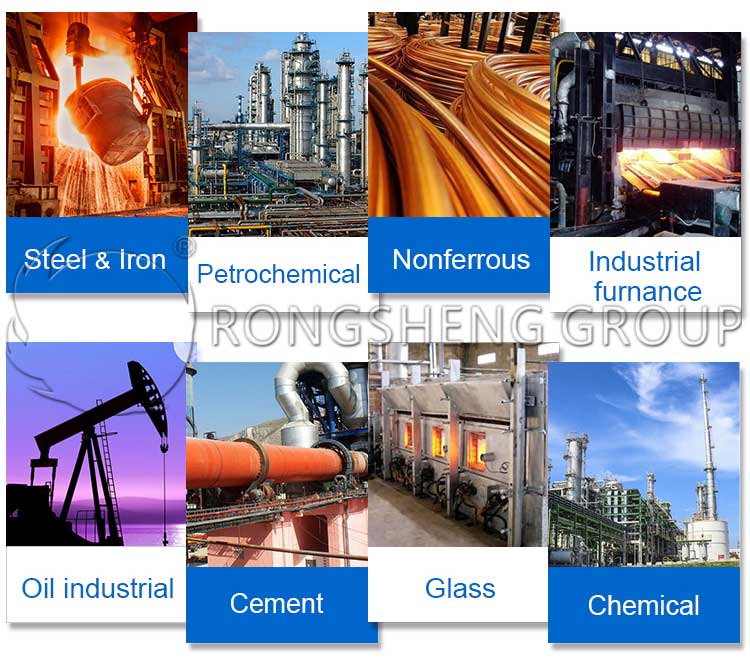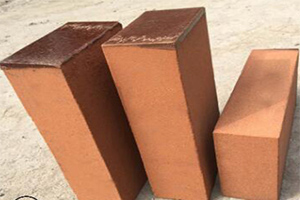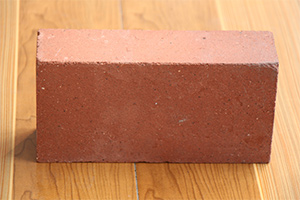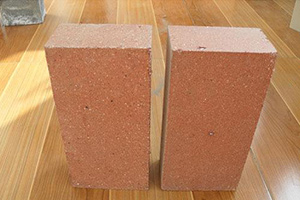There are many varieties of refractory castables, with different mix proportions, different performances, different construction methods, and different maintenance systems. Rongsheng Refractory Material Factory has found that there are many factors that affect the performance of refractory castables based on their production and sales experience over the years. The specific ones are as follows.

-
Amount of cement
Cement is one of the important components of refractory castables. It is an important material that determines strength and also affects other properties. Different types of cement and their dosage have different effects on performance. For example, CA-50 cement high-alumina refractory castables, refractory aggregates and powders are both secondary alumina clinker, and the amount of water added is 10%. With the increase of cement dosage, the compressive strength at room temperature will increase. The compressive strength after burning at 1200℃ is 40%~65% lower than the drying compressive strength. The refractoriness and load softening temperature continue to decrease, and the linear shrinkage after burning also increases. This is because CA-50 cement has a high impurity content and low refractoriness. When the dosage increases, the amount of liquid phase in the heating process of the castable is large, resulting in a decrease in performance. Therefore, under the condition of ensuring the strength at room temperature, the amount of CA-50 cement should be minimized to improve the high-temperature performance of the refractory castable. When the amount of cement is reduced, the refractory powder should be appropriately increased so that the combined amount of cement and powder can fully wrap the refractory aggregate and the refractory castable can achieve the maximum density. The commonly used cement dosage is 10%~15%.
-
Water addition
Different types of aluminate cement can produce different refractory castables. The same type of cement can also be used to make multiple types of refractory castables. When the mix ratio and process conditions of refractory castables are the same, the influence of water dosage on the performance of refractory castables is basically the same. Taking CA-50 cement high-alumina refractory castable as an example, the influence of water dosage on the performance of castables is that refractory aggregate and powder are both secondary alumina clinker, aggregate is 70% of the total material <15mm, powder and cement are 15% each. After the initial setting of the molding, the mold is removed after wet curing for 1d, and then standard curing is carried out for 2d to test various properties. As the amount of water used in the castable increases, various properties generally decrease significantly. The compressive strength at room temperature decreases by 27%~35%, the drying compressive strength decreases to 19.1MPa, the compressive strength after burning decreases by about 40%, and the high temperature compressive strength decreases by about 57%. The load softening temperature dropped from 1400℃ to 1250℃, and the post-firing line change dropped from -0.38% to -0.96%. The apparent porosity increased from 19% to 23%, and the bulk density dropped from 2.29g/cm3 to 2.17g/cm3. That is to say, the selection of water dosage (or water-cement ratio) is very important when preparing aluminate cement refractory castables. When the amount of water is large, after heating, the water escapes, the pores increase, the structure becomes loose, and various properties are reduced comprehensively. Therefore, under the condition of ensuring its construction and workability, the amount of water in the mixture should be minimized. Under the premise of not adding water reducing agent, the appropriate water dosage of aluminate cement refractory castable is 10%~13%.
It should be pointed out that when the mix ratio and production process of refractory castables are basically the same, there is an optimal value for its water dosage. Therefore, when constructing and making aluminate cement refractory castables, they should be tried and mixed first to select the best fluidity. Compare the strength at room temperature and determine the optimal amount of water before production and construction can begin.
-
Refractory powder
Refractory castables are generally mixed with appropriate refractory powder. Its functions: (1) Reduce cement consumption, reduce costs and increase operating temperature. (2) Refractory powder can play a role in infertility, and can participate in reactions at high temperatures to form high-temperature resistant minerals to improve refractory performance. (3) The addition of refractory oxide ultrafine powder can reduce the amount of water, form high-temperature resistant minerals at high temperatures or enhance sintering properties, so it can improve the performance of castables. The type, fineness and dosage of refractory powder are important factors affecting the performance of castables.
The fineness of refractory powder directly affects the strength, bulk density and apparent porosity of refractory castables. Generally speaking, the finer the refractory powder, the better the performance of the refractory castable. When ultrafine powder is used to replace part of the refractory powder, its bulk density increases, its apparent porosity is low, and its strength is significantly improved.
-
Refractory Aggregate
Refractory aggregate is one of the important components of refractory castables. Its variety, grade, maximum particle size and particle grading are the main factors affecting performance. The influence of refractory aggregate variety on the performance of refractory castables. In addition, the grade, impurity content and sintering quality of refractory aggregate also affect its performance. For example, when alumina clinker is used as refractory aggregate, as the Al2O3 content increases, that is, the grade improves, the refractoriness and load softening temperature of the castable increase, and the linear change after burning decreases. When the material is under-burned or has a high impurity content, its refractoriness and load softening temperature decrease, and the linear shrinkage after burning is large. Therefore, only by selecting suitable refractory aggregates with good sintering and high purity can high-performance refractory castables be prepared.
The more irregular the shape of the refractory aggregate particles, the better, and try not to use long flake materials. Its maximum particle size should be determined according to the thickness of the lining. Once the maximum particle size of the refractory aggregate is determined, its particle grading has a significant impact on the performance of the refractory castable.
-
Additives
Common additives used in refractory castables are generally divided into water reducers, setting accelerators and setting retarders. In addition, sintering agents and expansion agents are also added. It should be noted that the refractory cement used in refractory castables is different, and the selected additives and their dosage are also different, which should generally be determined by experiment.
-
Maintenance system
Maintenance systems are divided into standard maintenance, natural maintenance, wet maintenance, steam maintenance, water maintenance and dry maintenance.
The technical team of Rongsheng manufacturer reminds that when constructing amorphous refractory castables, they must be constructed strictly in accordance with the construction instructions. Strictly control the amount of water added. Choose experienced construction workers. To ensure the efficient construction quality. If there are any problems with the construction of refractory castables, technical formula adjustment, etc., please let us know. We can customize refractory lining material solutions according to your actual working conditions.




